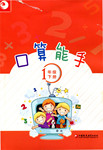题目内容
Many countries are increasing their use of natural gas,wind and other forms of .?
A.energy B.source C.power D.material?
A
source是指“源泉”;power指“动力”;material指“材料”。天然气(natural gas)和风(wind)都是能源,属于energy。

练习册系列答案
 口算能手系列答案
口算能手系列答案
相关题目
题目内容
Many countries are increasing their use of natural gas,wind and other forms of .?
A.energy B.source C.power D.material?
A
source是指“源泉”;power指“动力”;material指“材料”。天然气(natural gas)和风(wind)都是能源,属于energy。

 口算能手系列答案
口算能手系列答案